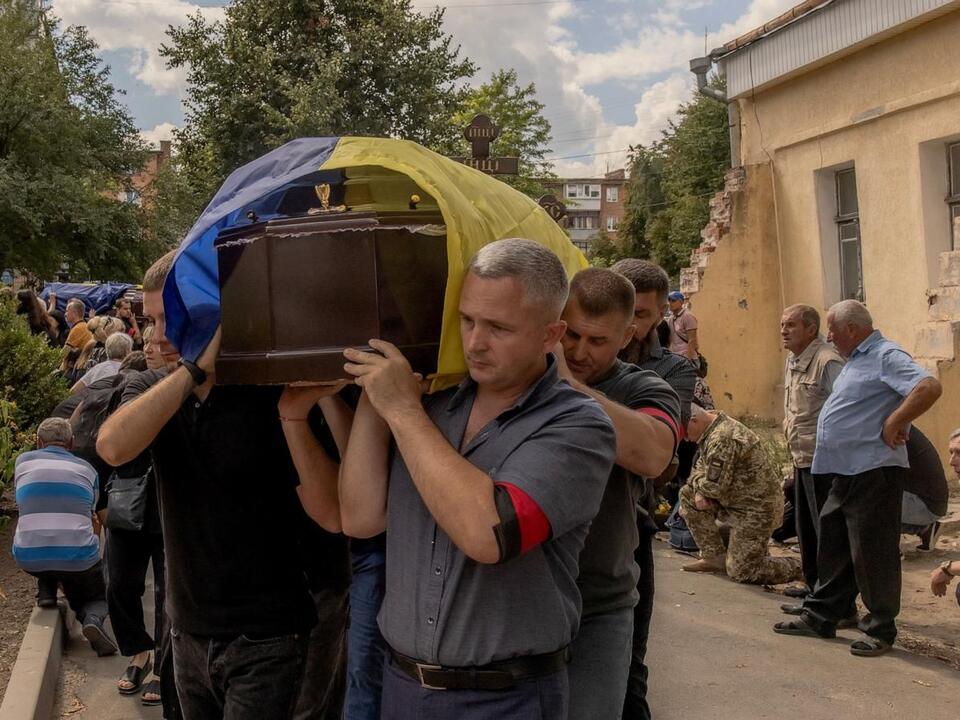Physical Address
304 North Cardinal St.
Dorchester Center, MA 02124
Physical Address
304 North Cardinal St.
Dorchester Center, MA 02124

Ukraine’s recent offensive into Russian territory has marked a significant escalation in the ongoing conflict. This unexpected operation has not only shifted the battlefield dynamics but has also intensified fighting within Ukraine, particularly in the eastern regions. As both nations ramp up their aerial campaigns, the consequences on the ground have become increasingly severe.
Following the incursion, Russia responded with a more aggressive air campaign, unleashing a barrage of missiles and drones over the past week that resulted in a troubling number of civilian casualties. In a particularly devastating attack, Russian cruise missiles struck the city of Lviv, which is typically deemed safe, leading to the deaths of seven individuals and injuring over fifty others. The strikes also caused significant destruction to infrastructure and buildings within the city.
Additionally, Russia has launched massive strikes against multiple cities during the last two weeks. On Tuesday, two missiles targeted a military academy in Poltava, causing the deaths of more than fifty people and injuring around 270. Such incidents highlight the increasing intensity of air operations from both sides amidst the evolving situation.
Ukraine’s incursion into the Russian-held Kursk region has allowed its forces to seize hundreds of square kilometers and numerous villages. They have also taken hundreds of Russian soldiers prisoner. Initially, this offensive took the Kremlin by surprise, creating an embarrassing moment for Russian leadership. However, despite early gains, Ukraine’s progress has since slowed, leading Russia to stabilize its defenses while remaining on the back foot.
The offensive’s impact has also inadvertently bolstered Russia’s ability to make rapid advances in eastern Ukraine. Some analysts suggest that Ukraine’s redirection of resources toward the Kursk operation has somewhat weakened its position elsewhere on the front line.
Meanwhile, Russian forces continue to advance toward the crucial logistical hub of Pokrovsk. This advancement has involved pushing through Ukrainian defenses and necessitating the evacuation of tens of thousands of civilians. The ongoing Russian offensive poses a severe risk to Ukraine’s supply lines in the Donbas region, as well as threatening to create conditions for a broader breakthrough along the frontlines.
Ukrainian military officials initially hoped that their actions in Kursk would draw Russian forces away from Pokrovsk, already under considerable pressure. However, thus far, Russia has not been distracted. Instead, the Kremlin has allocated many of its most prepared troops to continue the pressure on Pokrovsk rather than focusing on reclaiming territory in Kursk.
President Vladimir Putin confirmed this strategic decision on Thursday, emphasizing that the Kremlin would maintain its focus on the Pokrovsk operation. He articulated that the enemy’s intention was to provoke hasty responses and to spread forces thin across multiple sectors. Putin proclaimed that Russia’s forces had successfully reinforced their offensive capabilities instead.
Many military analysts are still assessing the fallout from Ukraine’s Kursk initiative, particularly regarding its long-term effectiveness. While it’s still ambiguous whether this move has inflicted a significant strategic blow to Russia, it has reframed the narrative, countering perceptions that Ukraine is losing ground in the conflict.
Ukrainian President Volodymyr Zelenskyy indicated that Russia had redeployed up to 60,000 troops to the Kursk region to counter the recent offensive. This claim has been supported by open-source researchers observing troop movements from other fronts. Analysts from the Institute for the Study of War noted signs of possible troop reallocations that might be intended for future operations directed toward Pokrovsk.
High-stakes evaluation continues as some experts believe the risks of the current maneuver should not be overstated. They warn that while the Ukrainian forces may hold minor territorial gains, the greater risk looms over potentially significant losses in eastern regions without retaining any leverage in Kursk.
However, some experts, like Phillips O’Brien from the University of St. Andrews, argue that Ukraine’s operation in Kursk possesses strategic merit. The efforts are seen as creating a defensible territory within Russia, complicating potential counterattacks from Russian forces. Such shifts not only stretch Russian forces thin but also enhance Ukraine’s position on the international stage.
Zelenskyy reiterated that the Kursk operation is a part of a broader strategy to press the war into Russia, with the overarching goal of compelling the Kremlin to negotiate. In tandem with its ground efforts, Ukraine has also intensified air operations targeting military and energy infrastructure deep within Russian borders, employing homegrown drones for attacks, including significant strikes against power plants and refineries near Moscow.
In a related development, Zelenskyy announced plans to present strategies to U.S. President Joe Biden aimed at compelling Russia to cease hostilities, underscoring the importance of diplomacy and economic measures alongside military actions. He emphasized that the primary objective of these efforts is to secure a fair resolution to the conflict for Ukraine.
This week, Zelenskyy also conducted a significant cabinet shake-up, which has raised concerns about the consolidation of power within his administration. The adjustments seek to inject new energy into Ukraine’s governance amid ongoing challenges stemming from the conflict with Russia.
Source: source names